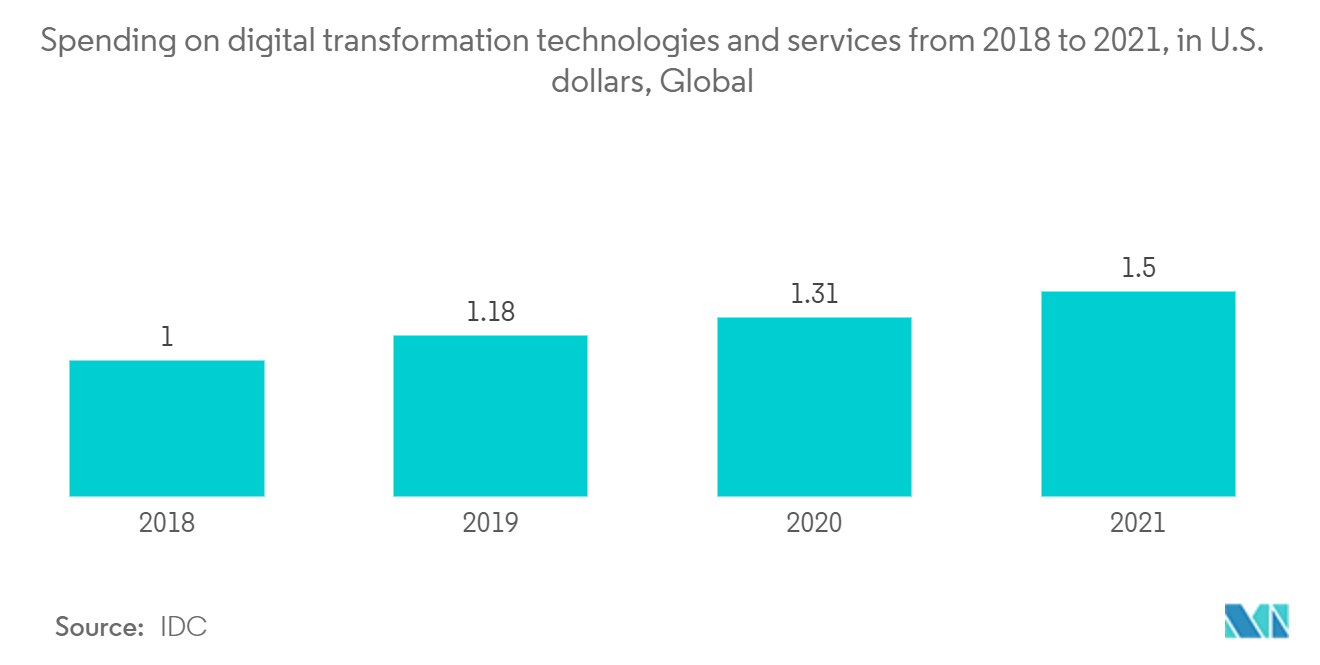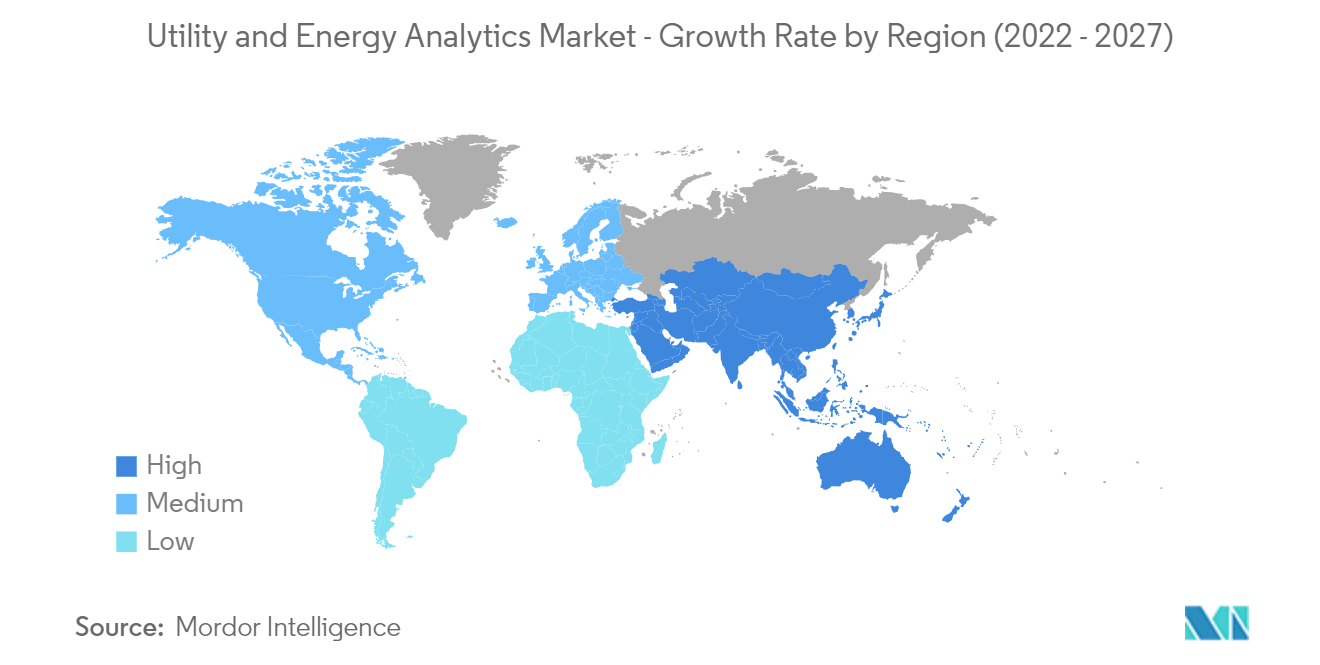Market Trends of Utility and Energy Analytics Industry
This section covers the major market trends shaping the Utility & Energy Analytics Market according to our research experts:
The cloud-based deployment model is expected to grow at a rapid pace.
- The cloud-based deployment model is anticipated to grow at a rapid rate, aided by technological advancements, leading to high levels of scalability and cost-effectiveness. The markets for load forecasting and demand response are expected to have significant shares of the market over the next five years.
- Predictive analytics plays a crucial role in the utility sector, mainly analyzing the growing data volumes, identifying failing physical assets, and improving customer behavior understanding. Utility companies rely on continuous operation, which includes pleasant functionality at every level. Hence, to avoid massive repercussions, predictive analytics is being widely adopted.
- Moreover, in January 2022, Uptake, a prominent provider of industrial intelligence software-as-a-service, announced a partnership with Cognizant, a significant player in professional services, to allow unified data management for the energy and utility industries. Uptake Fusion, which collects, transfers, organizes, and curates data in Microsoft Azure to provide advanced industrial analytics and asset performance management, has collaborated with Cognizant to provide industry consulting, systems integration, and application services. Industrial organizations can utilize Uptake Fusion in their enterprise cloud environment to supply data for industrial intelligence to internal and third-party data consumers. Users can also use its open APIs as plug-ins with current non-proprietary tools for dashboards, reporting, and monitoring, such as Microsoft Power BI, PowerApps, and Azure Time Series Insights.
- Oracle surpassed its 2020 objective of 33% renewable energy use in Real Estate and Facilities and established a new goal of 100% by 2025. Oracle Cloud also established a new aim of using 100% sustainable energy by 2025. These factors are thus expected to bolster the demand for the market during the forecast period.
- As per IDC, In 2022, the total spending on digital transformation (DX) is projected to reach 1.8 trillion U.S. dollars. By 2025, global digital transformation spending is forecasted to reach 2.8 trillion U.S. dollars. Hence with the rise in digital transformation spending, the market is expected to face various lucrative growth opportunities in the upcoming days.

North America to Lead and Pioneer Market for Utility and Energy Analytics Solutions
- North America is regarded as one of the greatest markets for utilities and energy analytics and is one of the top adopters of analytics solutions. The region's demand is mostly driven by developed economies' increased emphasis on innovations through R&D and technological improvement. When compared to Canada, the United States is a major factor in increasing the demand from the region. Demand in the nation has increased, particularly from the oil and gas, refining, and power generation sectors.
- The region has a strong foothold of manufacturers in the market. Some of them include SAS Institute Inc, Oracle Corporation, BuildingIQ, and IBM Corporation, among others. Also, the region has been at the forefront of adopting smart grid technology. A vast number of companies operating in the energy utility sector in the region have either fully deployed big data analytics or are in the process of implementation. Many large investor-owned utilities in the US market are still in the process of rolling out smart meters for their customers.
- The US Energy Information Administration predicts that between 2016 and 2040, global energy consumption will rise by 5%. Companies must cut downtime to sustain profitability effectively in light of the low growth rate. The market for data analytics in utilities and energy is fueled by this. In order to decrease energy use, the US government is also modernizing its energy systems and switching to Advanced Metering Infrastructure (AMI). For instance, the residential sector saw the highest rate of AMI adoption in the nation, according to the US Energy Information Administration (EIA). Canada has a high smart meter penetration rate as a result of the country's ambitious endeavors in its most populous regions. It is also expected that a large number of smaller municipal and cooperative utilities will be crucial to market penetration.
- The Institute for Electric Efficiency predicts that by 2024, there will be 90 million smart electricity meters shipped annually in the US, up from 61 million in 2015. The deployment of smart meters by several businesses, including Consolidated Edison, Duke Energy, Ameren, Entergy, PSEG, National Grid, and Xcel Energy, is anticipated to increase the number of smart meter shipments over the next years.
- Furthermore, the electric power companies in the region are exploring new technologies to serve increasingly sophisticated customers to expect a high-tech digital experience. Utilities in the country are highly using big data for better decision-making. Baltimore Gas & Electric, a gas and electric utility, makes numerous process and organizational changes to support and drive value from a centralized data analytics solution.


